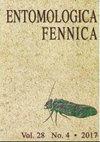Centipedes, millipedes, terrestrial isopods and their relationships to physical and chemical properties of forest soils
Q3 Agricultural and Biological Sciences
引用次数: 4
Abstract
The quality of soil environment in forest ecosystems of mountain zones was characterised by skeleton content and particle size as well as soil moisture and chemistry and used for deepening the knowledge of ecological requirements of centipedes, millipedes and terrestrial isopods. Soil skeleton and size of the particles were significant environmental factors, with Lithobius austriacus, Lithobius erythrocephalus and Lithobius nodulipes preferring stony soils. The isopods Ligidium hypnorum and Hyloniscus riparius were closely bound to heavy soils with a high clay content, which was related to increased soil moisture and indication ofwaterlogged soils. Soil reaction (pH/KCl) was less associated with the occurrence of the studied invertebrates. The soils with higher skeleton content and a favourable moisture regime containing more Ca2+ and Mg2+ were more attractive to some centipedes (Strigamia acuminata, Lithobius microps) and isopods (Trachelipus ratzebargii, Oniscus asellus, Porcellio scaber).蜈蚣、千足虫、陆生等足类及其与森林土壤理化性质的关系
山区森林生态系统的土壤环境质量以骨架含量和颗粒大小以及土壤水分和化学为特征,用于加深对蜈蚣、千足虫和陆生等足类动物生态需求的认识。土壤骨架和颗粒大小是重要的环境因素,奥地利石、红头石和结节石更喜欢石质土壤。等足类海绵藻(Ligidium hypnorum)和海绵藻属(Hyloniscus riparius)和高粘粒含量的重土壤紧密结合,这和土壤水分增加和水淹指示有关。土壤反应(pH/KCl)与所研究无脊椎动物的发生关系较小。骨架含量较高、含Ca2+和Mg2+较多的土壤对某些蜈蚣(Strigamia acuminata、Lithobius microps)和等足类(Trachelipus ratzebargii、Oniscus asellus、Porcellio scaber)更有吸引力。
本文章由计算机程序翻译,如有差异,请以英文原文为准。
求助全文
约1分钟内获得全文
求助全文
来源期刊

Entomologica Fennica
生物-昆虫学
CiteScore
1.20
自引率
0.00%
发文量
0
审稿时长
>12 weeks
期刊介绍:
Cessation.Information not localized
 求助内容:
求助内容: 应助结果提醒方式:
应助结果提醒方式:


